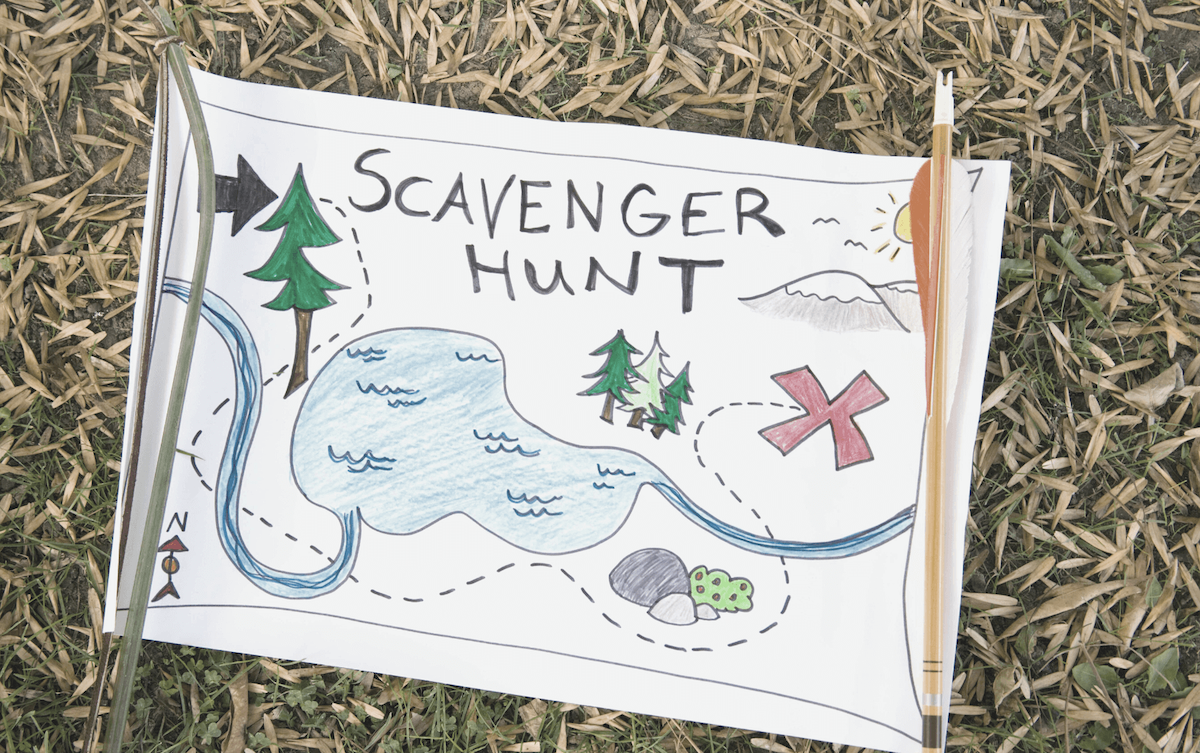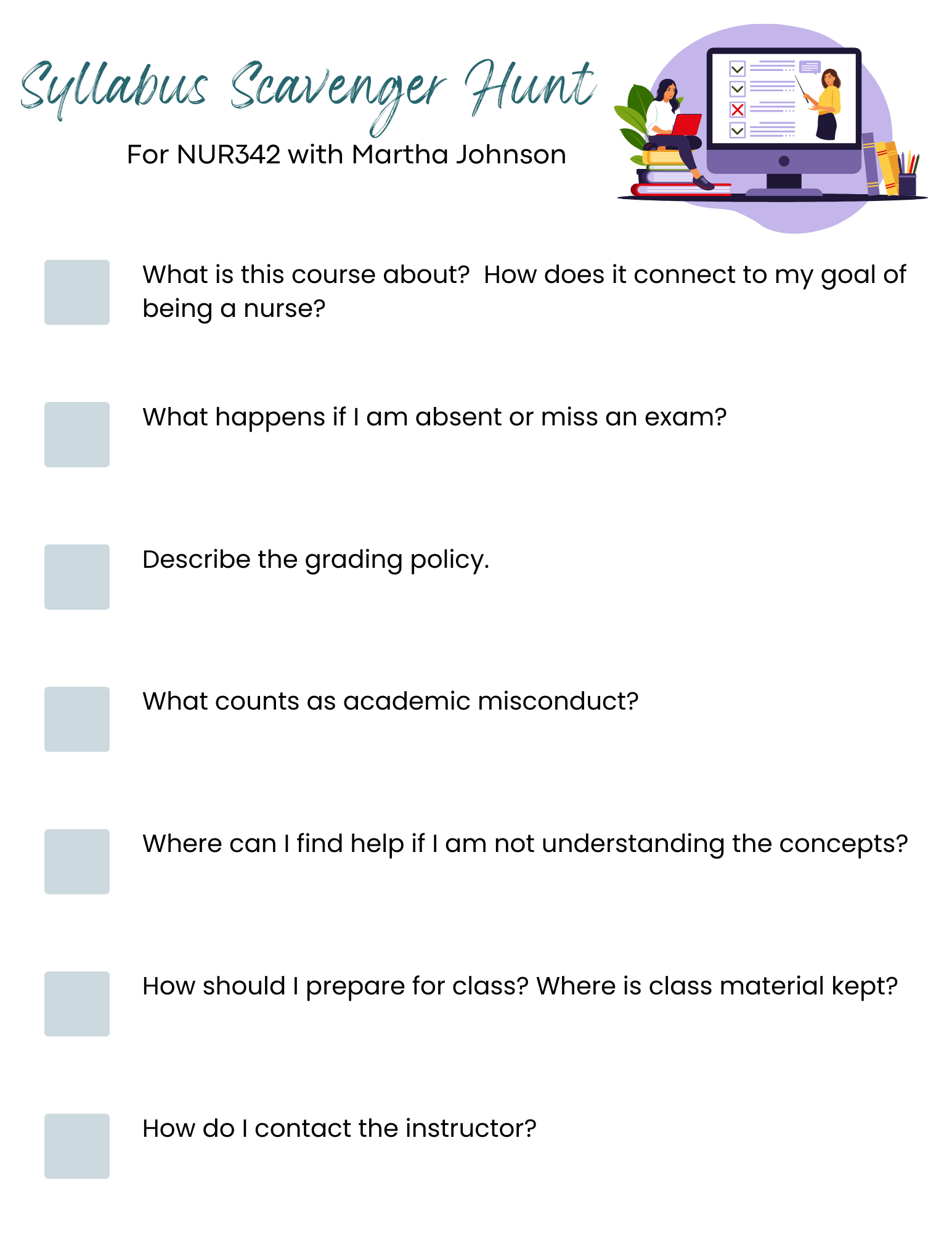
This post was written by Martha Johnson, MSN, RN, CEN, a nurse educator and owner of BreakoutRN.
An active learning syllabus adds the thrill of discovery to the first day of class.
The syllabus is a cornerstone of any higher education course. However, a standardized syllabus can be bland, boring, and difficult for students to engage in a meaningful way.
Even Snoop Dogg knows the importance of a syllabus for student success – check out this short, funny video of a chemistry instructor stressing the importance of a syllabus. Fortunately, we can also extend active learning to the syllabus.
So, regardless of if your syllabus is your creation or the standard version from your department or school, the idea of students “discovering” course information is an easy way to incorporate active learning into the first day of class.
Reasons for Creating an Active Learning Syllabus Activity
A syllabus essentially has two functions:
-
Serve as a contract between students and faculty about course expectations.
-
Motivate, encourage and give an inspirational roadmap of the course.
We all understand the importance of the nuts and bolts of a syllabus, and this post is not about delivering this contract between student and instructor. Instead, this article will focus on the second function; providing these expectations with a learner-centered, positive approach that can significantly impact students’ perception of a course.
Common Pitfalls of Syllabus Review
I am guilty of starting a class like this – introducing myself, reviewing the rules, including all of the penalties, and emphasizing how hard students will need to work to succeed. However, starting a class with a long list of policies and potential penalties can leave students disconnected from their motivations for being in the class.
An Alternative to Syllabus Review
What if, instead, we allowed students to engage with the syllabus in a positive light, setting the stage for success, building student confidence, and helping them to connect their “why?” This idea is an essential piece that is often missing from the first day of class. As educators, we can help students connect their meaning and purpose with the classroom content and their ultimate success as nurses.
A syllabus scavenger hunt is an active learning technique that can help connect the course and the student’s goals. It’s not a game, however. Instead, we are using the familiar concept of the scavenger hunt to allow students to discover and make connections independently.
Below is an example of a simple syllabus scavenger hunt.

Get the template so that you can modify it as needed for your course.
How to Implement an Active Learning Syllabus
This activity is best for small groups and is an excellent way to get students talking among themselves. In addition, the open-ended format allows students to write their interpretation of the formal language of the syllabus. Finally, the worksheet can be used as a reference to locate the answers to common questions quickly. And hopefully, cut down on your email responses that begin with “As stated in the syllabus…”
Once groups have completed their worksheets, do a quick full-class debriefing by having each group share their answer. Students can easily indicate on the worksheet the answer’s page number for easy reference.
In addition, utilizing an active learning syllabus is an excellent way for students to practice using their filters. Being involved in patient care involves filtering through large volumes of information and choosing what will be most important. Allowing students to practice this on the first day of a course sets the expectation that concise synopsis is an expectation and a clear success strategy.
Variations for Implementing a Syllabus Scavenger Hunt
In-Person Option
When doing the large group debriefing, have the student groups/group leader come to the front of the class to present. By including this step, you set the expectation that movement is a part of the class and that passively sitting through a lecture is not the MO for your class period.
Include a pinch of humor in the questions. For example, add a question about their favorite Disney princess or how they drink their coffee. These questions decrease the intimidating formality of the first day of class and serve to build a student community.
Make this an assignment in your grade book and give everyone 100% for participating. Starting class off with a win can make less confident students feel capable.
Virtual Option
If you are teaching an online course, you can create an active learning syllabus using tips from Natasha Nurse-Clark. Check out her post on how to make an online syllabus more interactive.
Who is this activity best for?
You can use this activity to open any active learning classroom at the start of the term. It can be a gentle introduction to an active learning environment in theory, clinical, or an online course.
If you are looking for a simple way to get students acclimated to your active learning classroom, or you need to add some pizzazz to the first class session, a syllabus scavenger hunt is an answer. This activity is quick to implement, does not require an entire syllabus re-do, and can be modified to fit any course. Just download the template, adjust it to fit your course content, and you are ready to start your class with an active learning syllabus review!
Start Building a Syllabus Scavenger Hunt
A typical syllabus can be bland and boring. You can help students connect the course content with their nursing goals by implementing this simple activity to help them discover the information independently. Using an active learning syllabus scavenger hunt is an excellent way to introduce a flipped classroom to your students on the first day without being too intimidating.
Martha Johnson, MSN, RN, CEN, is the founder of Breakout RN, a company she created to empower nurse educators to successfully transition from lecture to active learning. She believes active learning does not have to be hard or overwhelming, just take it one activity at a time.
The Ultimate Solution to Develop Clinical Judgment Skills
KeithRN’s Think Like a Nurse Membership
Access exclusive active learning resources for faculty and students, including KeithRN Case Studies, making it your go-to resource.




I found this article to be helpful and interesting, it stimulated ideas for my syllabus review next month. Thank you Martha and Keith